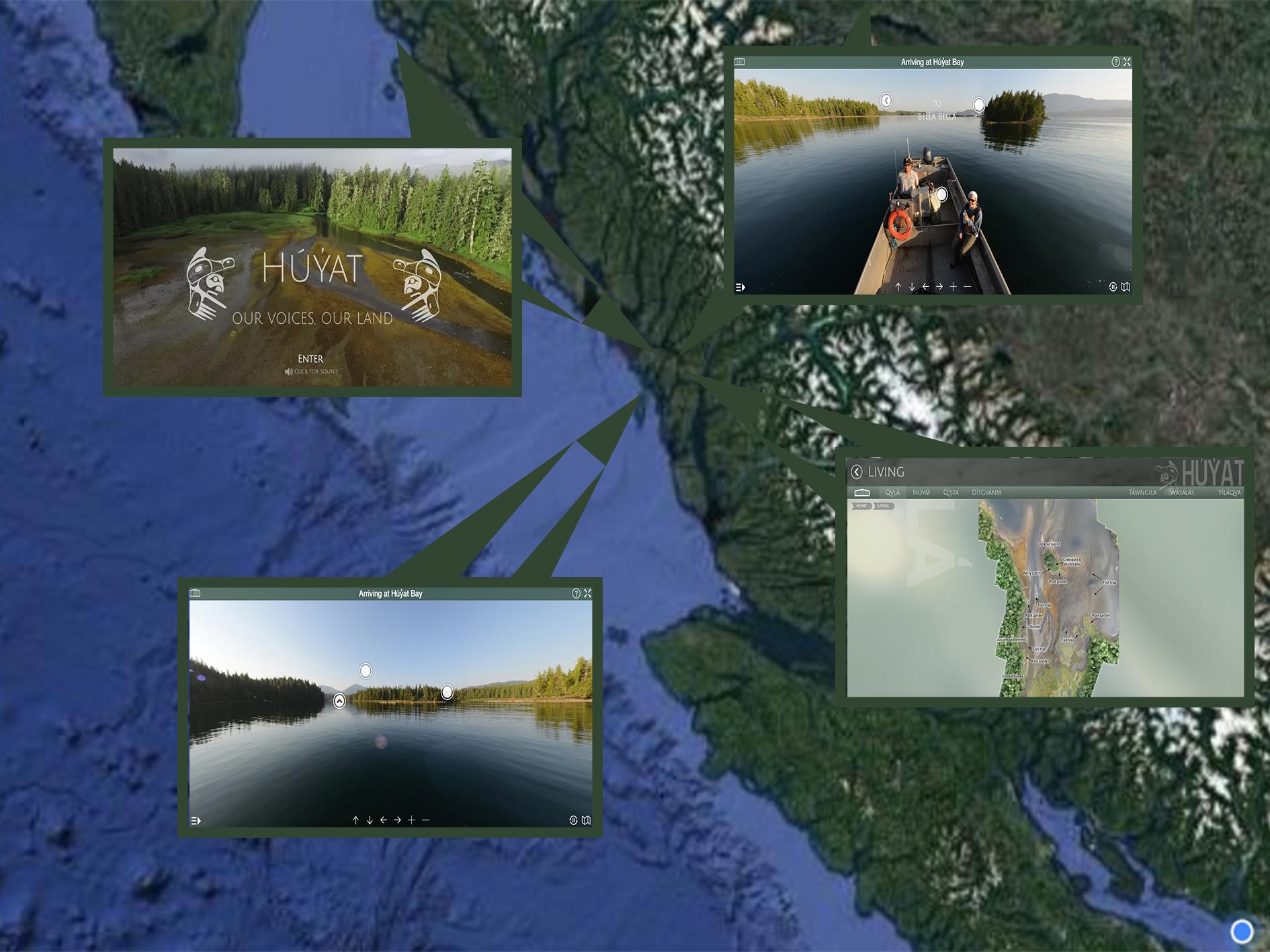
The Húy̓at Interactive Web Site is a living archive. An outcome of generations of knowledge, years of work and an entire history of the land and people, the website is an indication of a new direction for archaeology, one that “isn’t just about stone tools.”
The November 6th iteration of the Indigenous / Science UBC Research Cluster’s Working Tools Seminar Series hosted a presentation entitled Voices on the Land: The Húy̓at Interactive Web Site featuring four voices behind the eight-year project: Dana Lepofsky, Jennifer Carpenter, Q̌íx̌itasu also known as Elroy White, and Mark Wunch.
The Húy̓at website is a form of archive that hosts more than artifacts or papers. As Lepofsky put it, when it came to compiling the knowledge of the Heiltsuk people and land, “writing scientific articles wasn’t going to cut it.”
The project’s collaborators, members of the Heiltsuk Nation, researchers from Simon Fraser University, the University of Victoria, and Greencoast Media, needed a way to blend together many different kinds of knowledge; oral traditions, archaeology, memories and language.
The result was a truly collaborative project, containing many voices and many people’s actions, which seeks to “reflect more fully Indigenous ways of knowing and being.”
Húy̓at is a place in the heart of Heiltsuk traditional territory, one that Lepofsky described as a place of learning and teaching. It is also one of the oldest archaeological sites in British Columbia. In 2017, archaeologists excavated a settlement on Triquet Island within traditional Heiltsuk Nation territory that dated back 14,000 years, reaffirming stories the Heiltsuk people have told for generations about their history.
The website is not simply a collection of archaeological finds and historical data though. It contains recorded interviews with present day members of the Nation recounting oral histories, a virtual three-dimensional tour of ancient settlements at Húy̓at, the genealogy of Máǧaǧa a famous matriarch of the Heiltsuk people, and more than can be listed here. We encourage you to visit the site and find out for yourself.
Projects like the Húy̓at website have important possibilities for the future of learning and education for members of the Heiltsuk Nation, who can turn to this living archive to find their own history, as well as for others. With British Columbia increasingly teaching Indigenous histories in public school curriculums, this project can be a valuable tool for teachers unfamiliar with how to negotiate material.
This website is not just the product of an eight-year collaboration, but one outcome of years and years of efforts to preserve and protect Indigenous knowledge, memory and language. It steps forwards in an attempt to bridge the gap between Indigenous awareness and Western science, not just holding knowledge but reasserting Heiltsuk rights and title to their traditional territories.
by: Jane Willsie, Department of English Language and Literature, UBC; Green College Work Learn Content Writer, 2020-21
You can find more information about the Working Tools Seminar Series: Community-Facing Data Management Platforms for Indigenous-University Partnerships here: https://indigenousscience.ubc.ca/working-tools